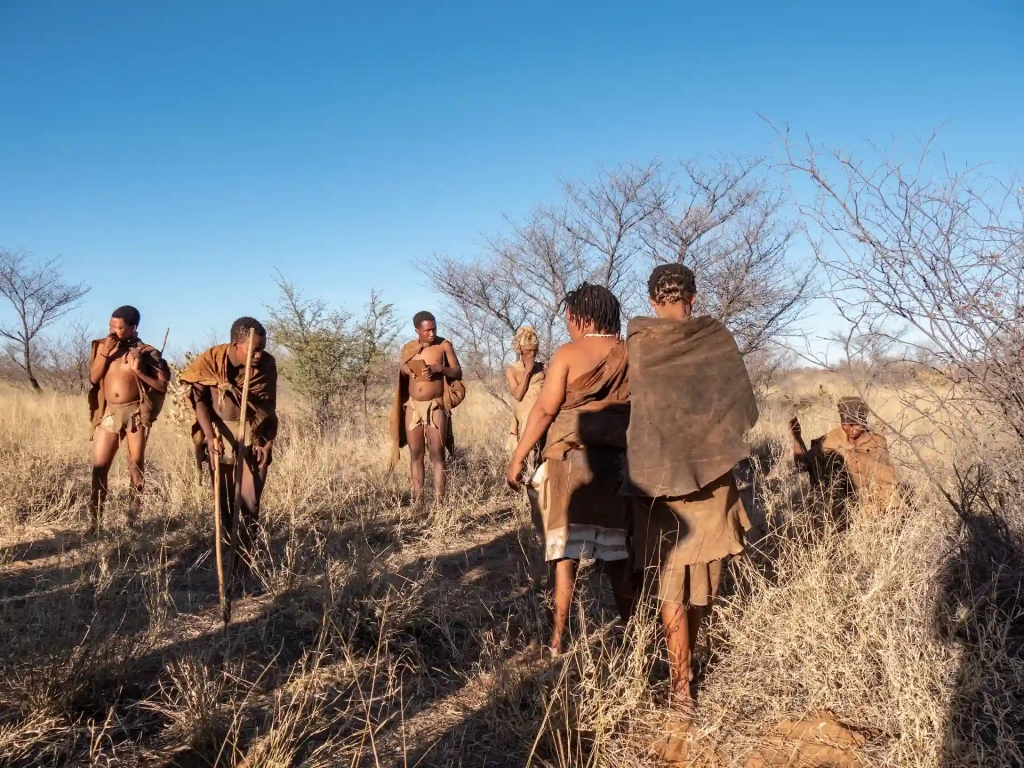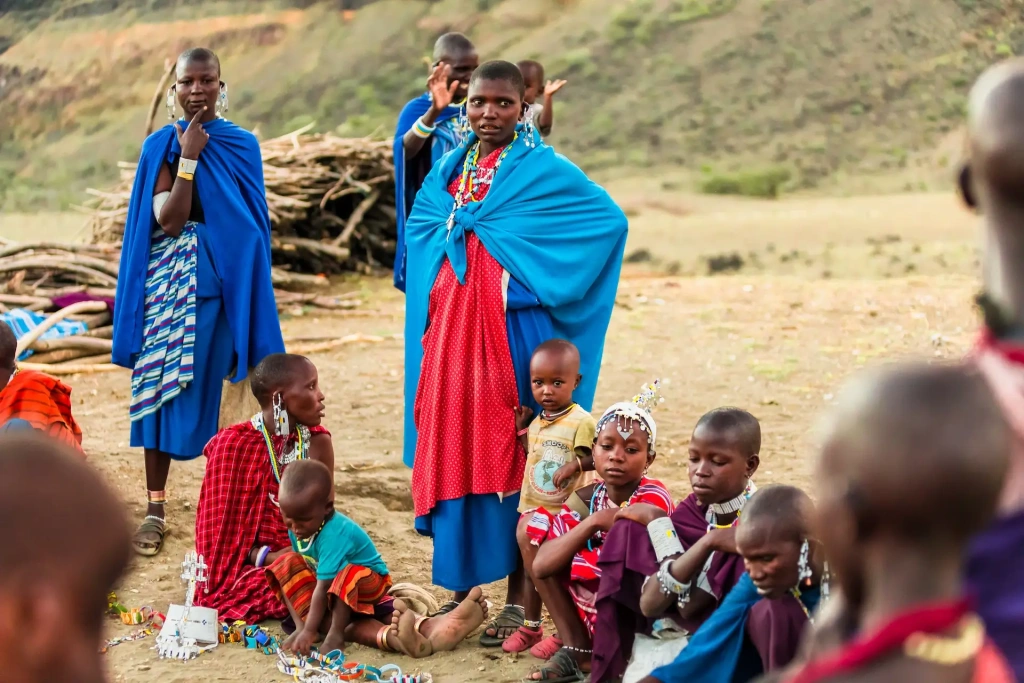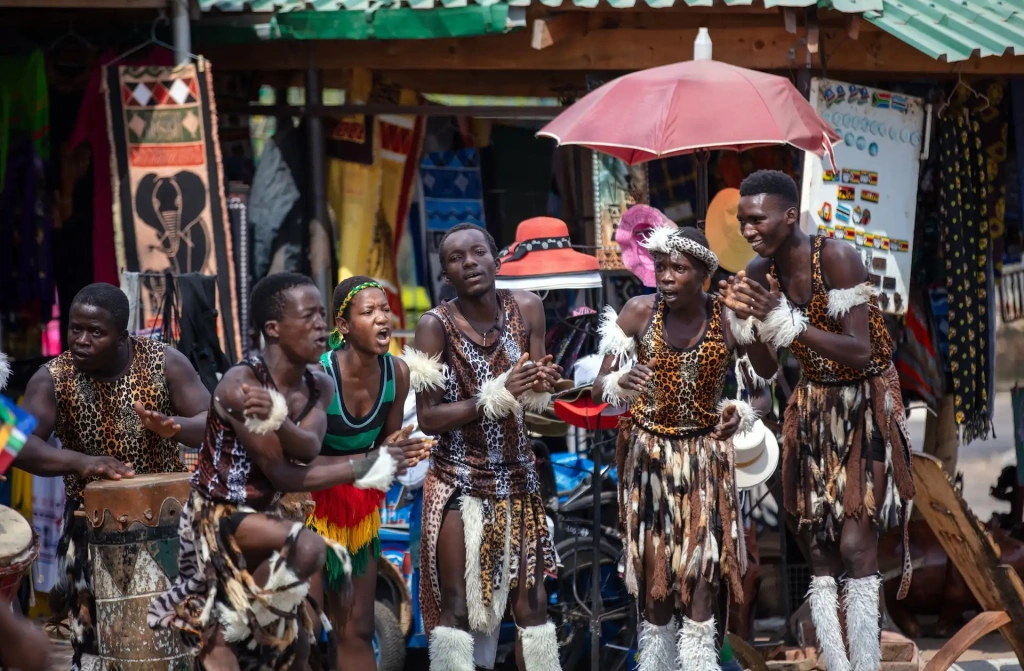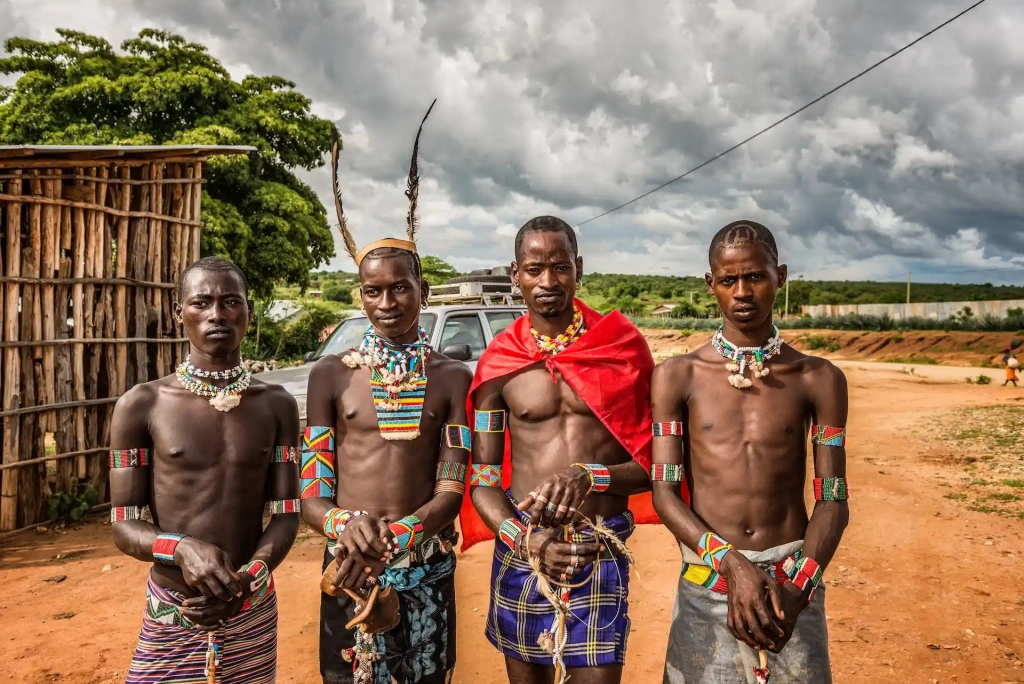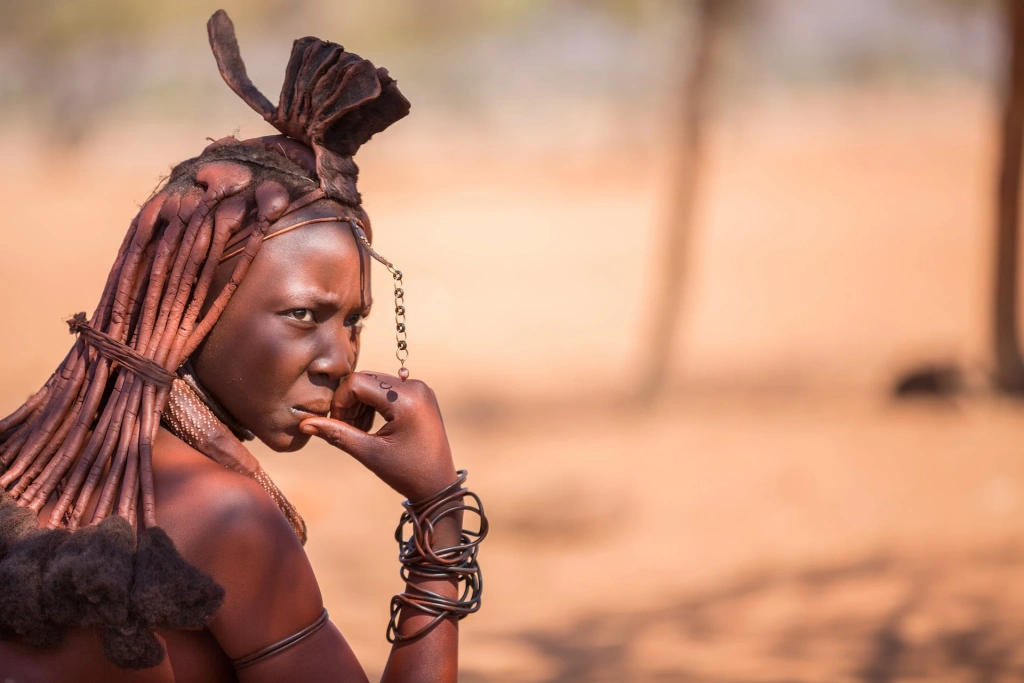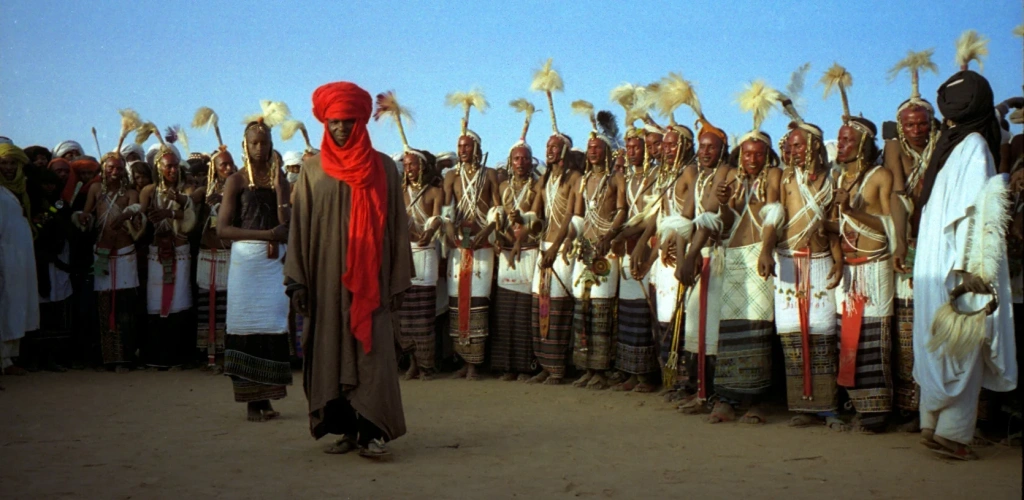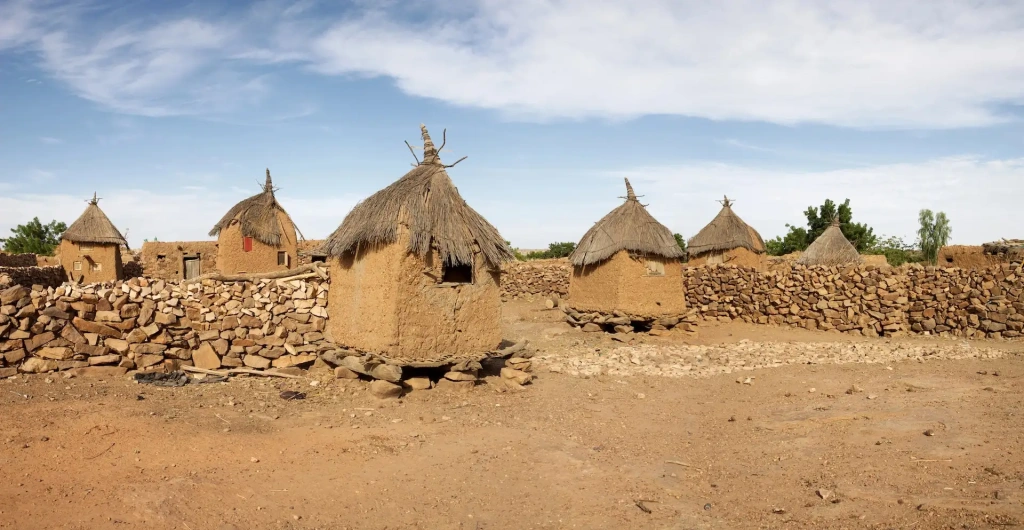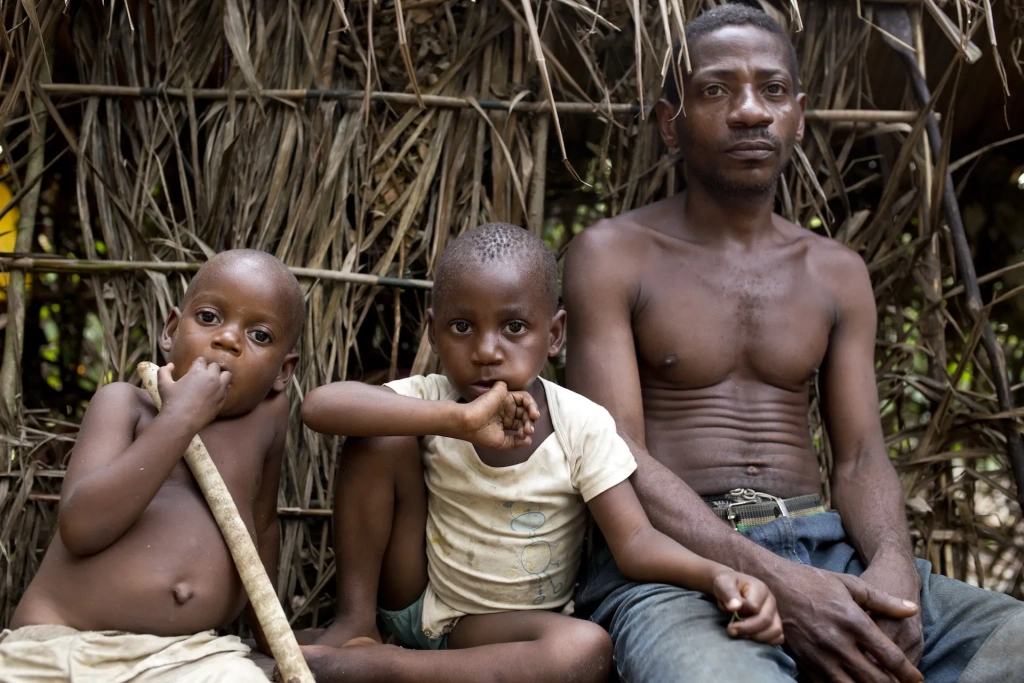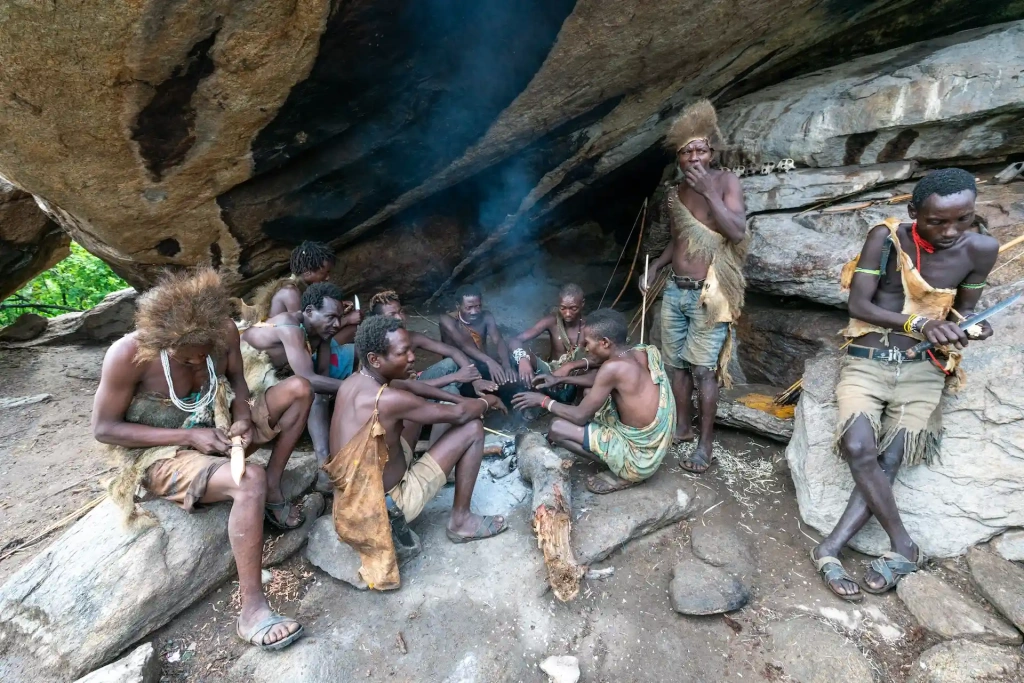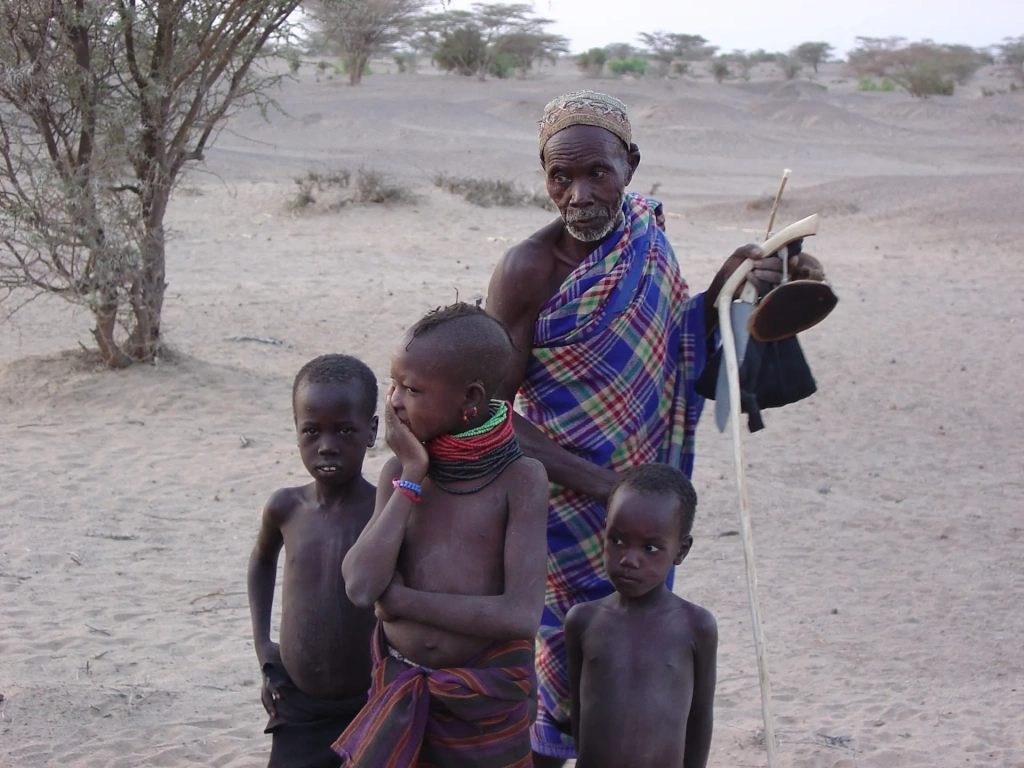The indigenous peoples of Africa remain largely unfamiliar to international audiences. Popular culture has often highlighted the Maasai warrior, famously admired by Meryl Streep’s character in the Oscar-winning film Out of Africa, directed by Sydney Pollack. Another well-known warrior archetype is the Zulu, who famously defeated the British at the in 1879. Yet these tribes represent just a small part of Africa’s rich and distinctive cultural landscape, which continues to preserve its traditions even in an era of rapid urbanization.
The Altezza Travel team has gathered fascinating insights into the cultures and traditions of ten indigenous peoples, ranging from the arid Sahel to the lush Drakensberg Mountains.
Famous African tribes: briefly
The Sān (Bushmen)
Key Facts:
- Where they live: mainly in Angola, Botswana, Zambia, Zimbabwe, Namibia, and South Africa
- Population: about 113.000 people (2021 estimates)
- Occupation: traditional crafts, hunting, and gathering
- Known for: ancient culture, rock paintings, and a language featuring distinctive clicking sounds
The Sān, also known as the Bushmen, are perhaps the most romanticized of the Southern African tribes. Their popular image was shaped in large part by the 1980 South African comedy The Gods Must Be Crazy, which portrayed the Bushmen as innocent, nature-loving people living peacefully in the Kalahari and showing kindness to strangers.
For thousands of years, the Bushmen survived by gathering wild fruits and hunting, guided by their deep knowledge of plants and animal behavior. Today, only a few continue to live entirely by hunting and gathering, while most have gradually integrated into the modern economies of the countries where they reside. According to UNESCO, the traditional way of life has been preserved among the Bushmen of Botswana, Namibia, and parts of Angola.
Some researchers believe that the ancestors of the Bushmen separated as a distinct ethnic group hundreds of thousands of years ago, long before modern humans began migrating out of Africa across Eurasia. Today, the Bushmen carry not only ancient DNA but also a deeply rooted culture.
Their rock paintings and engravings, carved on boulders, can be found throughout southern Africa. Experts at the British Museum highlight the remarkable realism of these works, which depict animals, people, and mysterious geometric patterns.
Bushmen artists drew inspiration not only from the world around them but also from their own legends. South African scholars suggest that the Horned Serpent panel, painted in the early 19th century, may depict a dicynodont, a herbivorous, tusked animal that lived in the region 190 million years ago. The panel’s creators appear to have discovered fossils, interpreted them creatively, and woven them into their rock art.
The Maasai
Key Facts:
- Where they live: Kenya and Tanzania
- Population: nearly 1.2 million in Kenya (2019 census), up to 1 million in Tanzania
- Occupation: raising cattle, goats, and sheep; traditionally hunting, now partially farming
- Known for: warrior traditions, initiation rituals, bright red clothing, and beadwork
The Maasai are one of the best-known and most studied East African tribes, which makes it difficult to say anything new about them. Global media and the steady flow of tourists to Kenya and Tanzania have reinforced a lasting stereotype: the Maasai as warriors armed with spears and shields, draped in bright red shuka cloaks. In reality, the Maasai cultural code is not centered on warfare but on pastoral life.
In their worldview, cattle are a gift from providence. According to legend, the creator god Enkai lowered an entire herd from the heavens on a rope and entrusted it to humans. Cattle serve as both currency—used to exchange for goods, services, and social status—and a source of food. A man’s influence and standing in the community are measured by the number of his wives, children, and the size of his herd.
The traditional Maasai diet relies heavily on milk and dairy products, fresh meat, and animal fat. Some utensils are made from rib bones and horns, while the iconic shuka cloaks—often featured in tourist photos—were originally made from cow or sheep hides. Today they are sewn from cotton and wool.
In recent years, some of the lands where the Maasai traditionally grazed their cattle have been designated as national parks and reserves, limiting access to certain pastures. Despite these changes, many Maasai continue to live much as their ancestors did centuries ago. Today, they can be found in the Serengeti, around the Ngorongoro Crater, and in the Maasai Mara National Reserve. Some safari programs even include visits to Maasai villages, offering travelers a chance to experience their culture firsthand.
The Zulus
Key Facts:
- Where they live: South Africa, Eswatini, and neighboring countries
- Population: about 12 million (2022 data)
- Occupation: engaged in agriculture, live and work in cities
- Known for: Shaka Empire, skilled beadwork, and the philosophy of Ubuntu
The Zulus primarily inhabit KwaZulu-Natal Province, an area roughly the size of Portugal.
Historically, the Zulus established a powerful kingdom along the Indian Ocean coast, known as KwaZulu, founded by the semi-legendary ruler Shaka. This strong Zulu state, however, clashed with the ambitions of British colonizers and the Boers, leading to the Anglo-Zulu War in the latter half of the 19th century. Although the British claimed formal victory, the conflict cemented the Zulus’ reputation as courageous and formidable warriors.
Yet viewing the Zulus only through the lens of warfare is a Eurocentric perspective. In South Africa, they are equally celebrated for Ubuntu, a humanist philosophy meaning “I am because you are,” or “live and let others live.”
Zulu culture is also renowned for its intricate beadwork. The colors of beads in ornaments and clothing carry hidden meanings (e.g., white for purity, red for love), while patterns convey social status, emotions, and family relationships.
The Hamar
Key Facts:
- Where they live: Ethiopia
- Population: about 50.000
- Occupation: grow sorghum, maize, and beans; raise cattle; lead a semi-nomadic life
- Known for: a unique initiation ritual that includes jumping over bulls, and the chilling custom of mingi
The Hamar are one of eight closely related tribes of the Omo Valley that have lived along the banks of the Omo River for centuries. South African researcher Tim Forssman describes this region as a “social melting pot.”
Cattle herding is central to Hamar life, with cows, sheep, goats, and even camels forming the backbone of their economy and culture. Cattle also play a key role in a striking initiation ritual for boys entering puberty. During the ceremony, young men must jump over a line of bulls to demonstrate their agility, strength, and courage. Following this, the maza—unmarried young men who have completed the initiation—whip women as a symbolic display of dominance.
For Westerners, the Hamar’s masculine initiation rituals may seem shocking. However, researcher Tim Forssman notes that Hamar women often take pride in the scars they receive and sometimes compete for the chance to be struck. Boys who complete the ceremony gain the right to own cattle and marry.
The Hamar are also skilled in using local plants, employing roots and leaves as medicinal remedies for both people and livestock. In addition to traditional medicine, the tribe believes in the power of curses. Children born as twins, outside of sanctioned marriages, or with physical abnormalities, such as unevenly erupted teeth, are considered mingi, thought to bring misfortune to the community. Traditionally, mingi children are physically eliminated, a practice classified as infanticide by UNICEF and the Ethiopian government, which is actively working to end it.
This practice remains poorly studied academically. CNN notes that the custom may have originated generations ago as a survival strategy: children deemed mingi were considered potential burdens or unable to continue the tribe’s lineage.
The Himba
Key Facts:
- Where they live: Namibia and Angola
- Population: about 50,000
- Occupation: semi-nomadic cattle herding and, historically, hunting and gathering
- Known for: bright body paint using red ochre, largely non-monetary until the late 20th century, with greater reliance on cash since the 2000s
The Himba live in the foothills and savanna regions of the Kunene area in northwestern Namibia. This small tribe raises cattle, goats, and sheep, and cultivates maize and millet, a cereal crop used for porridge and flour. During the dry season, Himba families migrate with their herds in search of water and pasture.
The arid environment has helped shape the Himba’s distinctive appearance. Many girls and women cover their skin and hair with otjize, a bright paste made from animal fat, oil, and ochre pigment. In the Himba culture, the ochre color symbolizes life and vitality, while otjize also serves practical purposes. In 2023, a team of South African and French scientists demonstrated that components of the paste block harmful ultraviolet rays, which helps explain why the Himba comparatively rarely suffer from skin cancer.
Until the 2000s, the Himba relied on barter and rarely used money. Today, their traditional way of life faces threats from iron ore and cobalt mining on their ancestral lands.
The Wodaabe
Key Facts:
Where they live: regions south of the Sahara
Population: 160,000–200,000
Occupation: herding cattle, trading, and seasonal farming
Known for: the Gerewol groom beauty contest, a cultural code emphasizing patience and modesty, traditional African body art, and a blend of Islam and animism.
The Wodaabe are part of the larger Fulbe ethnic group, distinguished by their strong adherence to ancestral traditions. Their name, which translates to “people of prohibitions,” reflects this commitment and sets them apart from other Fulbe communities. The Wodaabe speak the Fula language, which has no written form.
Their pastoral communities live on the edge of the Sahara, often near Tuareg camps. In this harsh environment, where vegetation is scarce, the Wodaabe move frequently in search of grazing land for their livestock: camels, goats, donkeys, and their distinctive long-horned cattle.
Like the Tuareg, the Wodaabe have practiced Islam since the 16th century, influenced by the renowned theologian Muhammad al-Maghili. His radical teachings, which emphasized separating Muslims from non-Muslims, resonated with the leaders of nomadic African tribes in the Maghreb. The idea of jihad also appealed to these elites, providing a religious justification for raids into the territory of present-day Niger.
Today, it is generally believed that the wealthiest and most influential Wodaabe families are the most devout, while ordinary nomads tend to observe only the basic tenets of Islam.
The best-known expression of Wodaabe culture is the Gerewol festival, held each year after the rainy season near the town of In-Gall in Niger. Lasting about a week, it centers on a striking men’s beauty contest judged by a panel of women.
During the competition, Wodaabe men wear bright clothing, white turbans or straw hats, and elaborate hairstyles decorated with ostrich feathers and ornaments. The ideals of beauty emphasize the whiteness of teeth and eyes, so contestants enhance these features by lining their eyes with charcoal and applying vivid makeup made from red and yellow minerals.
The Dogon
Key Facts:
- Where they live: Mali and Burkina Faso
- Population: about 800,000
- Occupation: farming, cattle herding, blacksmithing, and other crafts
- Known for: ritual masks and dances, along with a distinctive cosmology that includes legends of contact with beings from Sirius
The Dogon are one of the West African tribes that live in several border villages of Burkina Faso and in the remote areas surrounding the Bandiagara Plateau, which UNESCO has described as one of the most striking landscapes in West Africa. The site was inscribed on the World Heritage List in 1989.
What sets the Dogon apart from other tribes south of the Sahara is their remarkably well-preserved traditional African culture and way of life. Most villages are made up of square clay houses topped with conical thatched roofs.
The Dogon are primarily farmers, cultivating millet, beans, sorghum, and onions on mountain terraces and plains. Agricultural knowledge, including insights into the land, weather, crops, and cultivation techniques, is passed down orally, with children learning by observing adults at work.
Each Dogon village is led by a hogon, an elder chosen from among the oldest and most respected residents. One such elder became historically notable through his conversations with French anthropologist Marcel Griaule.
In 1946, an elder named Ogotemmeli shared a legend in which a planet inhabited by humans once orbited near Sirius. When part of the star began to explode, the Dogon deity Amma moved the people closer to the Sun in a “cosmic ark,” which became the Earth. Griaule was struck by Ogotemmeli’s detailed knowledge of the Solar System and the satellites of Sirius, observations that would have been impossible without advanced instruments. Even more remarkable was that Ogotemmeli himself was blind.
These conversations later became the basis for Marcel Griaule’s book The Pale Fox, embraced by supporters of theories about prehistoric human contact with extraterrestrials. Today, however, scholars generally view the Dogon’s supposed secret knowledge of Sirius’ companion star as a case of “cultural contamination” resulting from interactions with Griaule and other Europeans.
Still, this debate does nothing to diminish the richness of Dogon culture, which has preserved its distinctive African tribal customs and rituals despite the influence of Islam and Christianity.
The Aka (Pygmies)
Key Facts:
- Where they live: Central African Republic (CAR), Congo, Gabon, Cameroon
- Population: about 30,000
- Occupation: hunting game, gathering honey and fruits, fishing, trading with Bantu-speaking tribes
- Known for: polyphonic songs, short stature, flexible gender roles, and a tender approach to child-rearing
Pygmy tribes are scattered across equatorial Africa and are generally divided into two groups: the eastern peoples (Mbuti and Twa) and the western peoples (Bakola, Baka, and Aka). References to them stretch far back in history: Aristotle wrote about a “dwarf race,” and ancient Egyptian records also mention them. For centuries, Europeans regarded the existence of the world’s smallest people as semi-mythical until 1869, when German naturalist Georg Schweinfurth encountered a small Aka community during his expedition through the Nile and Congo deltas.
The Aka are nomadic hunter-gatherers. American anthropologist Barry Hewlett has noted their deep knowledge of local flora and fauna. Their diet draws from an impressive variety of sources, including 63 plant species, 28 types of game, as well as nuts, fruits, honey, mushrooms, and roots.
At first glance, the Aka seem far removed from the 21st century, and one might expect their society to be strictly patriarchal. Yet they are remarkable for their gender equality. Men often care for children while women hunt or gather, and young fathers rarely let go of their infants, maintaining constant physical contact. Anthropologist Barry Hewlett observed that Aka men interact with their children five times more often than men in most other cultures.
Infants often accompany their parents everywhere, including on hunts, jungle treks, and even social gatherings. While fathers drink palm wine and converse with friends, babies sleep soundly in their arms. The British charity Fathers Direct, cited by The Guardian, has even called the Aka “the best fathers in the world.” Life for the Aka, however, is not without hardship: deforestation has made hunting increasingly difficult, and political instability in the region adds further challenges.
Though the Aka hold relatively few festivals, when they do celebrate, it is with energy and joy. Their dances and distinctive polyphonic music, performed with instruments such as the enzeko drum and the harp-like geedale-bagongo, have been recognized by UNESCO as part of the Representative List of the Intangible Cultural Heritage of Humanity.
The Hadza
Key Facts:
- Where they live: Tanzania (Lake Eyasi, Yaeda Valley)
- Population: around 1,200, with only 300–400 maintaining a traditional way of life
- Occupation: gathering roots, berries, and honey, hunting small and large game
- Known for: The Hadza are one of the last hunter-gatherer tribes of Africa to maintain their traditional way of life in its purest form.
Like the Pygmies, the Hadza live a nomadic lifestyle, moving frequently rather than settling in one place. They are believed to have inhabited northern Tanzania for at least 40,000 years, surviving on a diet of berries, roots, and various types of game.
Hadza communities are small, typically consisting of 20–30 people, and function without chiefs or formal hierarchies. All decisions are made by consensus through collective discussion. Men hunt together and share the catch equally, distributing food based on need rather than status.
The Hadza diet also includes baobab fruit, berries, and honey, which they prize for its nutrition and sweet taste. They harvest honey with the help of the clever honeyguide bird, which locates wild bee hives and signals their presence with a distinctive call. The hunter then takes the honey, sharing the wax and remaining contents with the bird. Local beliefs hold that human greed or refusal to share can have consequences: the next time, an offended honeyguide might lead the hunter not to honey, but to a dangerous animal.
Biologists have long studied the Hadza’s remarkably balanced diet, which is believed to support the richest gut microbiome on the planet. Tim Spector, a professor of genetic epidemiology at King’s College London, followed the Hadza diet for several days. Afterward, his own microbiome increased by 20%, enriched with new bacteria, including those that support immunity.
The Turkana
Key Facts:
- Where they live: Kenya, near the border with Sudan
- Population: over 1 million
- Occupation: cattle herding, partly fishing in the eponymous lake
- Known for: elaborate hairstyles and Olympic champions
The Turkana people live around Lake Turkana, a UNESCO World Heritage site known for its unique biodiversity. The lake is home to 79 species of fish and the largest population of Nile crocodiles in the world. Following the construction of Ethiopia’s Gibe III Dam, UNESCO added Lake Turkana to its list of natural sites at risk. The dam has reduced water levels by half, threatening the Turkana’s ability to fish. The U.S. Geological Survey also warns that rising salinity could endanger certain fish species.
Strictly speaking, the Turkana are more than just a tribe: they are a large ethnic group that has played an active role in Kenya’s social and political life since the era of British rule. Turkana men served in the King’s African Rifles, fighting in World War I against Paul von Lettow-Vorbeck’s forces and in World War II against Italian troops in East Africa and against Japanese forces in Burma (now Myanmar).
Many Turkana have also gained international recognition. Runner Paul Ereng won Olympic gold for Kenya at the 1988 Seoul Games, Joseph Ebuya is a four-time World Cross Country Champion, and model Ajuma Nasanyana has walked the runway for Victoria’s Secret alongside Naomi Campbell in New York.
Turkana men are especially known for their distinctive hairstyles. While part of the head is shaved, particularly outstanding members create elaborate arrangements. To protect these styles while sleeping, they use a special wooden support called an ekicholong, which also doubles as a portable stool to avoid sitting on hot ground.
F.A.Q.
What if the customs of African tribes seem strange or off-putting?
The African heritage and traditions have developed over centuries, even millennia, shaped by unique natural and social conditions. It’s important to approach them with respect and empathy, even if they seem unusual. Keep in mind that your own habits and manners may seem just as unfamiliar or even strange to indigenous peoples of Africa.
Can I take photos of people during my trip?
Only with their permission. In many indigenous African communities, photography is seen as an intrusion into personal or spiritual space. When visiting African tribes, always ask for a photo first, and when appropriate, offer a small token of appreciation to show your gratitude.
How can I support the members of African tribes?
Purchase food, clothing, jewelry, and handmade crafts directly from residents. Doing so helps tribes preserve their traditional livelihoods while providing communities with a source of income that does not rely on intermediaries.
All content on Altezza Travel is created with expert insights and thorough research, in line with our Editorial Policy.
Want to know more about Tanzania adventures?
Get in touch with our team! We've explored all the top destinations across Tanzania. Our Kilimanjaro-based adventure consultants are ready to share tips and help you plan your unforgettable journey.















